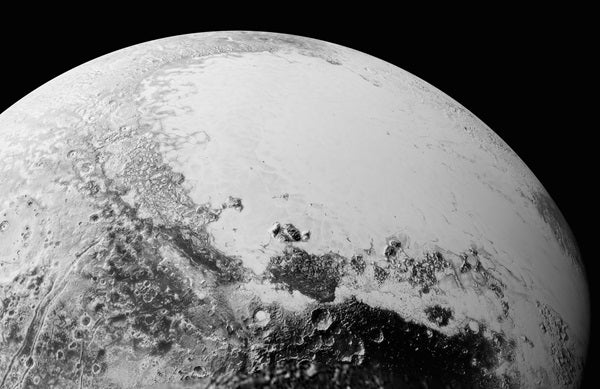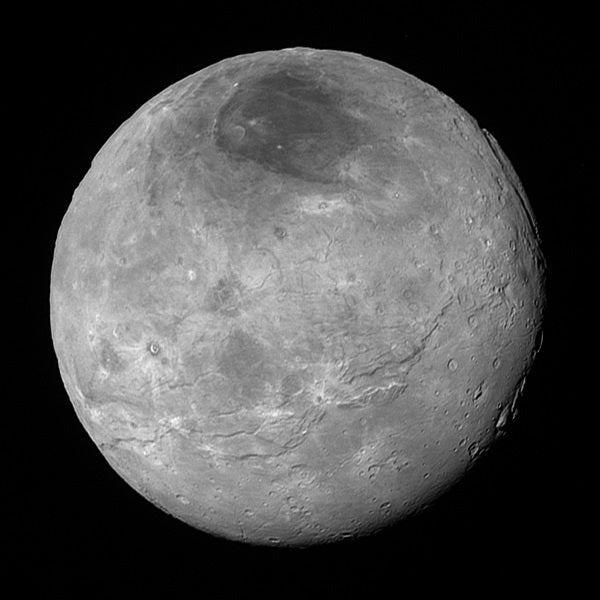“Pluto is showing us a diversity of landforms and complexity of processes that rival anything we’ve seen in the solar system,” said New Horizons Principal Investigator Alan Stern of the Southwest Research Institute (SwRI), Boulder, Colorado. “If an artist had painted this Pluto before our flyby, I probably would have called it over the top — but that’s what is actually there.”
New Horizons began its yearlong download of new images and other data over the Labor Day weekend. Images downlinked in the past few days have more than doubled the amount of Pluto’s surface seen at resolutions as good as 400 meters (440 yards) per pixel. They reveal new features as diverse as possible dunes, nitrogen ice flows that apparently oozed out of mountainous regions onto plains, and even networks of valleys that may have been carved by material flowing over Pluto’s surface. They also show large regions that display chaotically jumbled mountains reminiscent of disrupted terrains on Jupiter’s icy moon Europa.
“The surface of Pluto is every bit as complex as that of Mars,” said Jeff Moore, leader of the New Horizons Geology, Geophysics and Imaging (GGI) team at NASA’s Ames Research Center in Moffett Field, California. “The randomly jumbled mountains might be huge blocks of hard water ice floating within a vast, denser, softer deposit of frozen nitrogen within the region informally named Sputnik Planum.”
New images also show the most heavily cratered — and thus oldest — terrain yet seen by New Horizons on Pluto next to the youngest, most crater-free icy plains. There might even be a field of dark wind-blown dunes, among other possibilities.
“Seeing dunes on Pluto — if that is what they are — would be completely wild because Pluto’s atmosphere today is so thin,” said William B. McKinnon, a GGI deputy lead from Washington University, St. Louis. “Either Pluto had a thicker atmosphere in the past, or some process we haven’t figured out is at work. It’s a head-scratcher.”
Discoveries being made from the new imagery are not limited to Pluto’s surface. Better images of Pluto’s moons Charon, Nix, and Hydra will be released Friday at the raw images site for New Horizons’ Long Range Reconnaissance Imager (LORRI), revealing that each moon is unique and that big moon Charon’s geological past was a tortured one.
Images returned in the past days also have revealed that Pluto’s global atmospheric haze has many more layers than scientists realized and that the haze actually creates a twilight effect that softly illuminates nightside terrain near sunset, making them visible to the cameras aboard New Horizons.
“This bonus twilight view is a wonderful gift that Pluto has handed to us,” said John Spencer, a GGI deputy lead from SwRI. “Now we can study geology in terrain that we never expected to see.”
The New Horizons spacecraft is now more than 3 billion miles (about 5 billion kilometers) from Earth and more than 43 million miles (69 million kilometers) beyond Pluto. The spacecraft is healthy, and all systems are operating normally.











